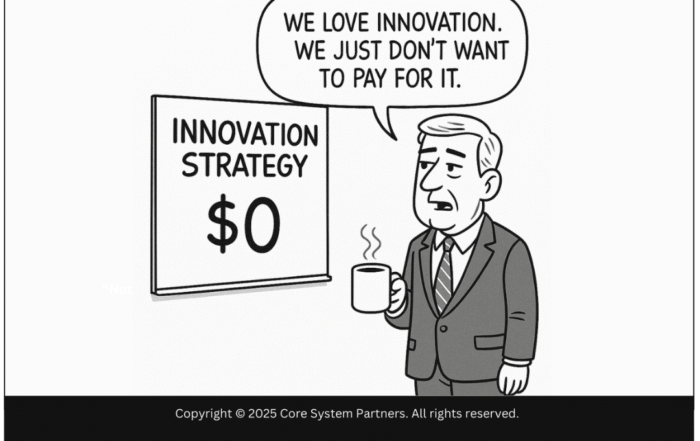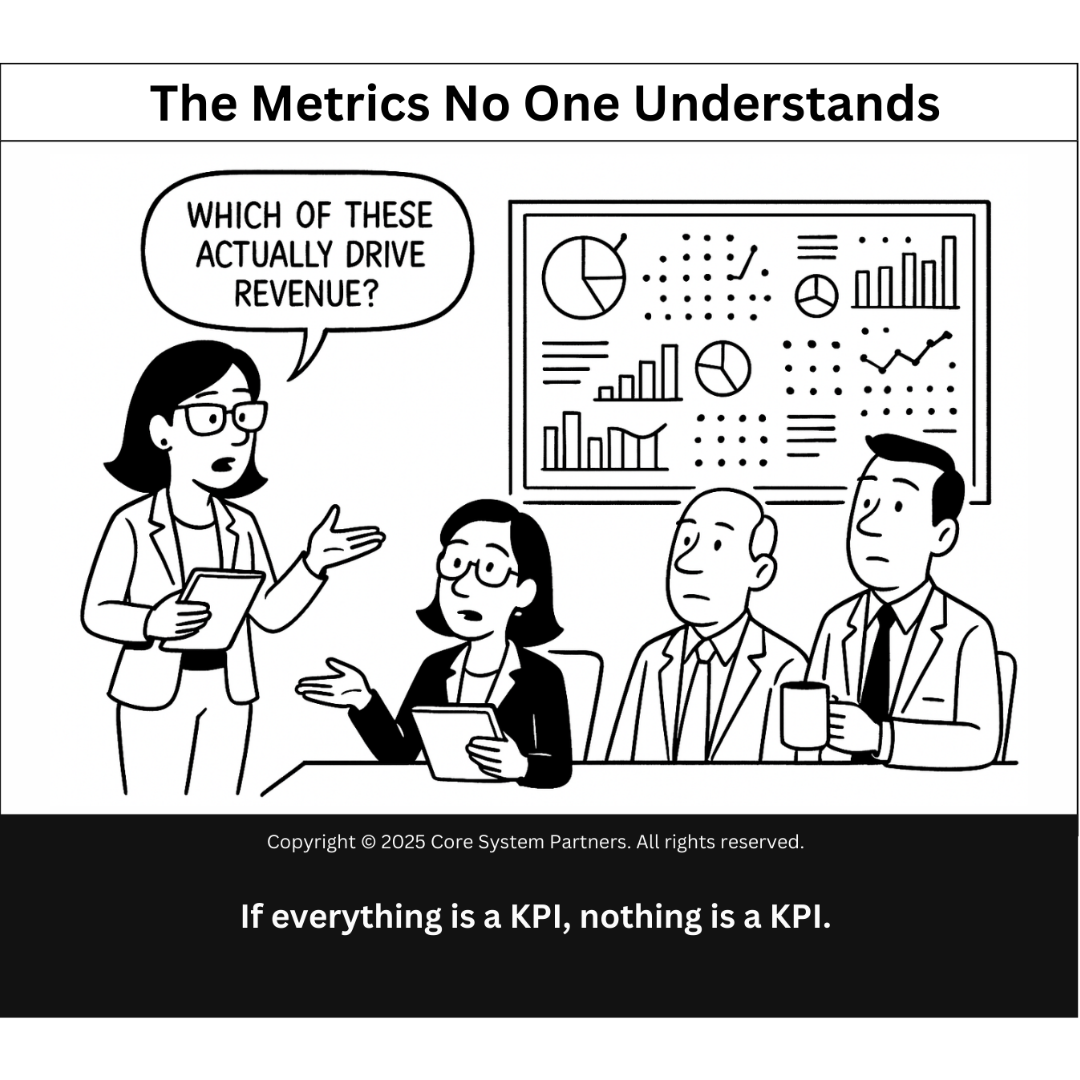
Mastering vendor selection for core banking transformation: Ensure smooth delivery, mitigate risks, and build long-term partnerships with the right approach.
TL;DR – Mastering Vendor Assessment and Selection: How to Choose the Right Partner for Core Banking Transformation
- Start with Strategic Fit – Align vendor capabilities with your transformation goals and operating model.
- Assess Beyond the RFP – Dig into culture, delivery track record, and real-world implementation experience.
- Balance Innovation with Stability – Prioritize partners who bring agility without sacrificing reliability.
- Clarify Roles and Governance Early – Avoid missteps by defining ownership, expectations, and escalation paths upfront.
- Why It Matters – The right vendor isn’t just a supplier—they’re a critical success factor in your core transformation journey.
Have you ever found yourself halfway through a transformation project thinking, “We might’ve picked the wrong partner”?
I once spoke with a CFO who described their core banking overhaul as a “perfect storm”—and not in a good way. They’d picked a vendor with a slick pitch, glowing references, and a price that looked great on paper. But once the ink dried, reality hit hard. Delays. Budget overruns. Functionality gaps. The relationship quickly turned from promising to problematic.
They’re not alone. Choosing the right vendor for a core banking transformation can feel like searching for a needle in a haystack—blindfolded. And getting it wrong isn’t just an inconvenience. It’s a strategic risk.
The stakes are high, but with a methodical approach to vendor assessment and selection, you can stack the odds in your favor. Let’s walk through how.
Why Vendor Selection is Make-or-Break for Core Banking Projects
Choosing a vendor isn’t just ticking boxes on a checklist. You’re choosing a long-term partner—one that will shape your bank’s ability to deliver services, innovate, and stay compliant.
Pick the wrong one, and you may find yourself:
- Chasing delays and overruns.
- Managing a partner instead of collaborating with one.
- Getting solutions that don’t fit your strategy—or your customers.
- Fielding awkward questions from stakeholders when things go south.
On the flip side, selecting the right vendor means:
- Projects stay on track and on budget.
- You get a partner who anticipates your needs, not just reacts.
- The relationship adds long-term value beyond go-live.
- You sleep a little easier at night.
The Core Components of Vendor Assessment (and How to Nail Them)
1. Start with a Structured Evaluation Process
Before vendors line up with their demos and brochures, you need a solid plan.
- Define crystal-clear criteria: What exactly do you need? Consider technology, services, integration capabilities, support, and cultural alignment.
- Use standardized scoring: Create an objective framework so everyone evaluates vendors on the same terms.
- Craft a detailed RFP: Don’t settle for marketing fluff. Ask pointed questions that elicit meaningful answers.
Pro tip: Think beyond today’s needs. Can this vendor grow with you? Will their roadmap support yours?
2. Build the Right Team to Make the Call
Vendor selection shouldn’t be a solo effort—or left entirely to procurement.
- Get cross-functional: Include people from IT, operations, legal, compliance, and front-line business units. They’ll spot red flags you might miss.
- Train your decision-makers: Ensure everyone knows how to evaluate vendors and can separate sizzle from substance.
- Leverage past lessons: If you’ve been burned before, don’t let that pain go to waste. Bake the learning into your process.
3. Manage Risk Like a Pro
Every vendor brings risk. It’s your job to uncover it before signing the deal.
- Due diligence is non-negotiable: Financial stability, customer references, regulatory history—dig deep.
- Contingency plans matter: What happens if the vendor can’t deliver? Plan for it now, not later.
- Negotiate smart contracts: Lock in service levels, performance clauses, and exit options. Your legal team should love (not loathe) these deals.
4. Know the Market (and Stay Ahead of It)
Vendor landscapes shift fast. What’s true today may not be tomorrow.
- Do your homework: Stay current on who’s delivering, who’s innovating, and who’s fading.
- Talk to your network: Forums, conferences, and peer groups can give you insight no whitepaper will.
- Monitor performance continuously: Just because you signed a great partner doesn’t mean you can set it and forget it.
5. Don’t Forget Post-Selection Management
The job isn’t done when you ink the deal. In fact, it’s just starting.
- Structured onboarding is key: Align on processes, escalation paths, and communication rhythms.
- Regular performance reviews: Don’t wait for problems to surface. Stay ahead with scheduled check-ins and reviews.
- Open and honest dialogue: Issues will arise. What matters is how quickly and collaboratively you address them.
Best Practices That Separate Good Selections from Great Ones
1. Define What You Really Need
- Be specific about requirements—not just tech specs, but service levels, culture fit, and future scalability.
- Separate “must-haves” from “nice-to-haves.”
- Think long-term: Can this vendor grow and evolve with you?
2. Apply a Disciplined Evaluation Model
- Use a scoring system to keep the process objective.
- Leverage comparison tools to track how each vendor measures up.
- Make decisions by consensus—no single person should shoulder the call.
3. Communicate Transparently
- Be clear about expectations and deliverables.
- Encourage vendors to ask clarifying questions.
- Provide feedback—whether they win or lose. It builds goodwill and strengthens future RFPs.
4. Do Your Homework (and Then Some)
- Go beyond the glossy reference lists. Call clients they didn’t mention.
- Visit their operations if you can. Seeing is believing.
- Understand their financial health—especially if they’re a critical part of your transformation.
5. Negotiate with Purpose
- Contracts should spell out deliverables, timelines, and exit strategies.
- KPIs should be measurable and enforceable.
- Plan for what happens if things go sideways.
How This Impacts Your Transformation (and Why It Matters)
Get vendor selection right, and you position your bank for:
- Smooth delivery: Projects stay on time, on budget, and on point.
- Lower risk: Fewer surprises, fewer fires to fight.
- Strategic alignment: Vendors that get your goals will help you reach them.
- Enduring partnerships: Great vendors evolve with you—not just for go-live, but well beyond.
Get it wrong, and the consequences are real:
- Delays and overruns that throw your business case into question.
- Frustrated stakeholders who lose confidence in the program.
- Operational headaches you don’t have time for.
- Reputational risk if customers (or regulators) notice the impact.
A Story of Turning Things Around
The CFO I mentioned earlier? After their initial stumble, they rebuilt their vendor assessment from scratch. Cross-functional teams. More rigorous due diligence. Contracts that spelled everything out. The difference was night and day. Future projects landed on time and delivered value. They didn’t just find better vendors—they became a better client.
Moving Forward
Mastering vendor assessment and selection isn’t optional. It’s foundational. The vendors you pick can accelerate your transformation—or hold it back.
Treat vendor selection like the strategic decision it is. Be methodical. Be thorough. Be forward-thinking.
And remember: the right vendor isn’t just a supplier. They’re a partner in your bank’s future.
Your Next Steps
Wondering how your vendor selection process stacks up? We can help.
Take the Core Banking Transformation Readiness Assessment
It’ll highlight your strengths and uncover areas where your vendor selection and management approach can improve.
#CoreBankingTransformation #CoreBankingReadiness





